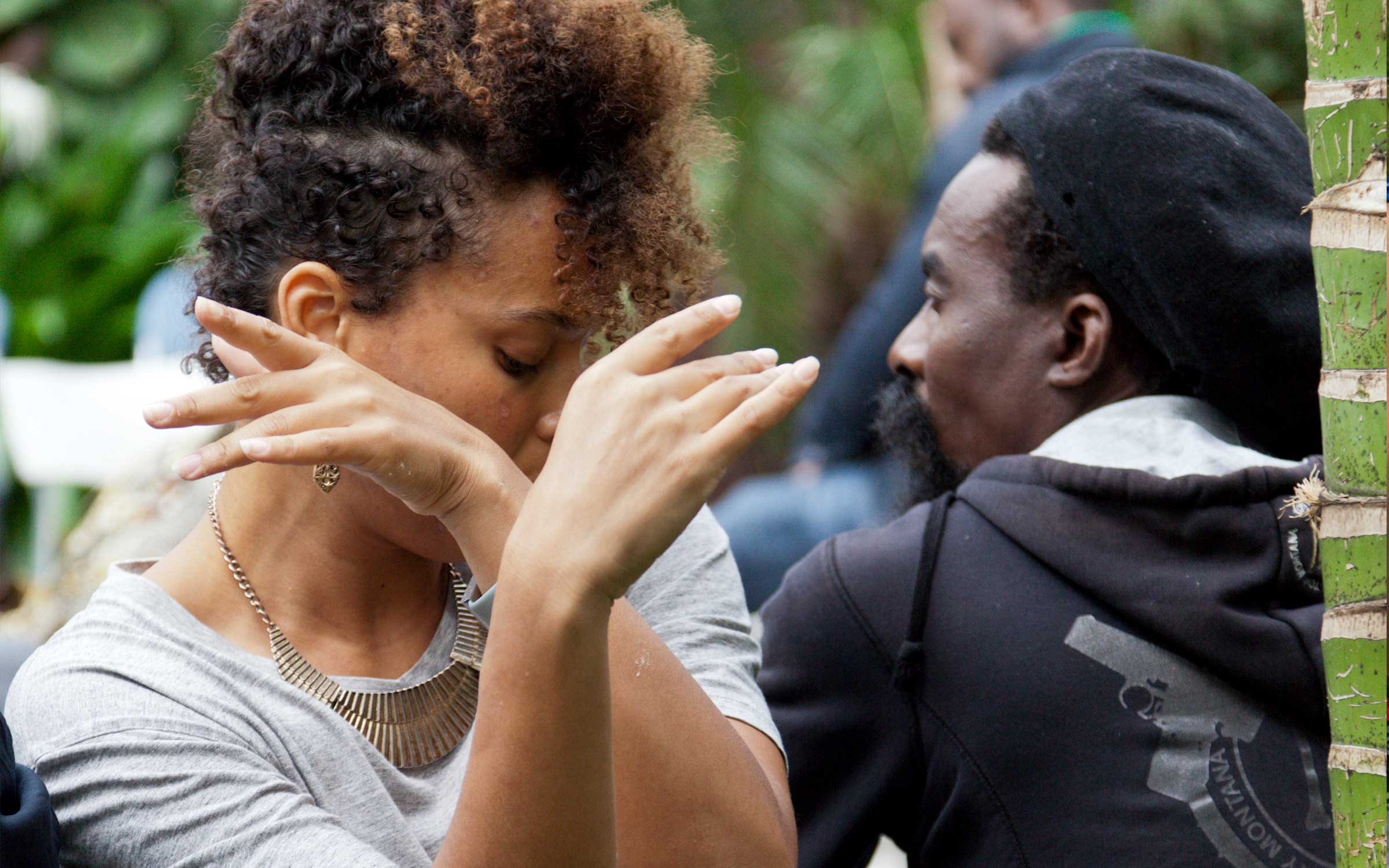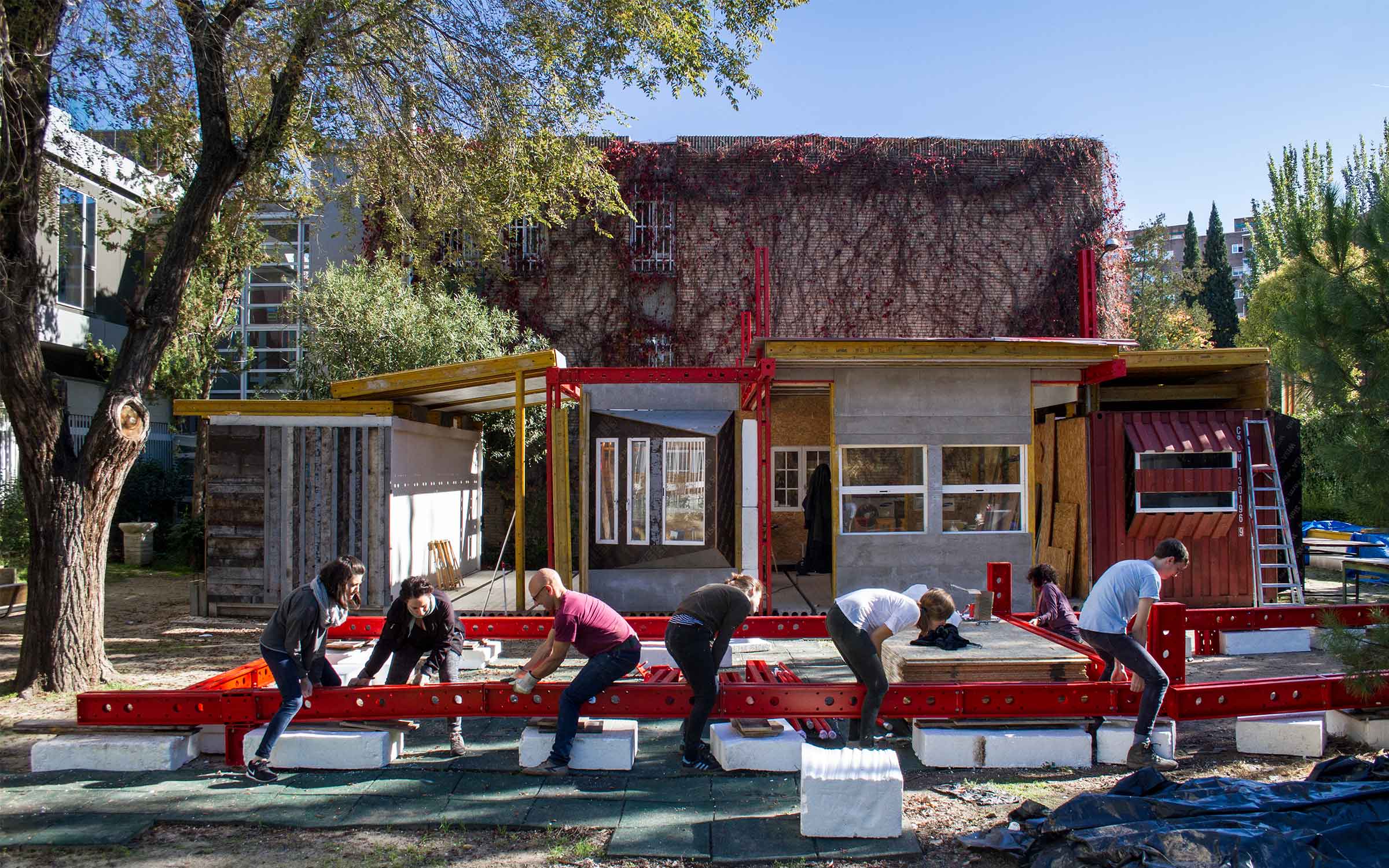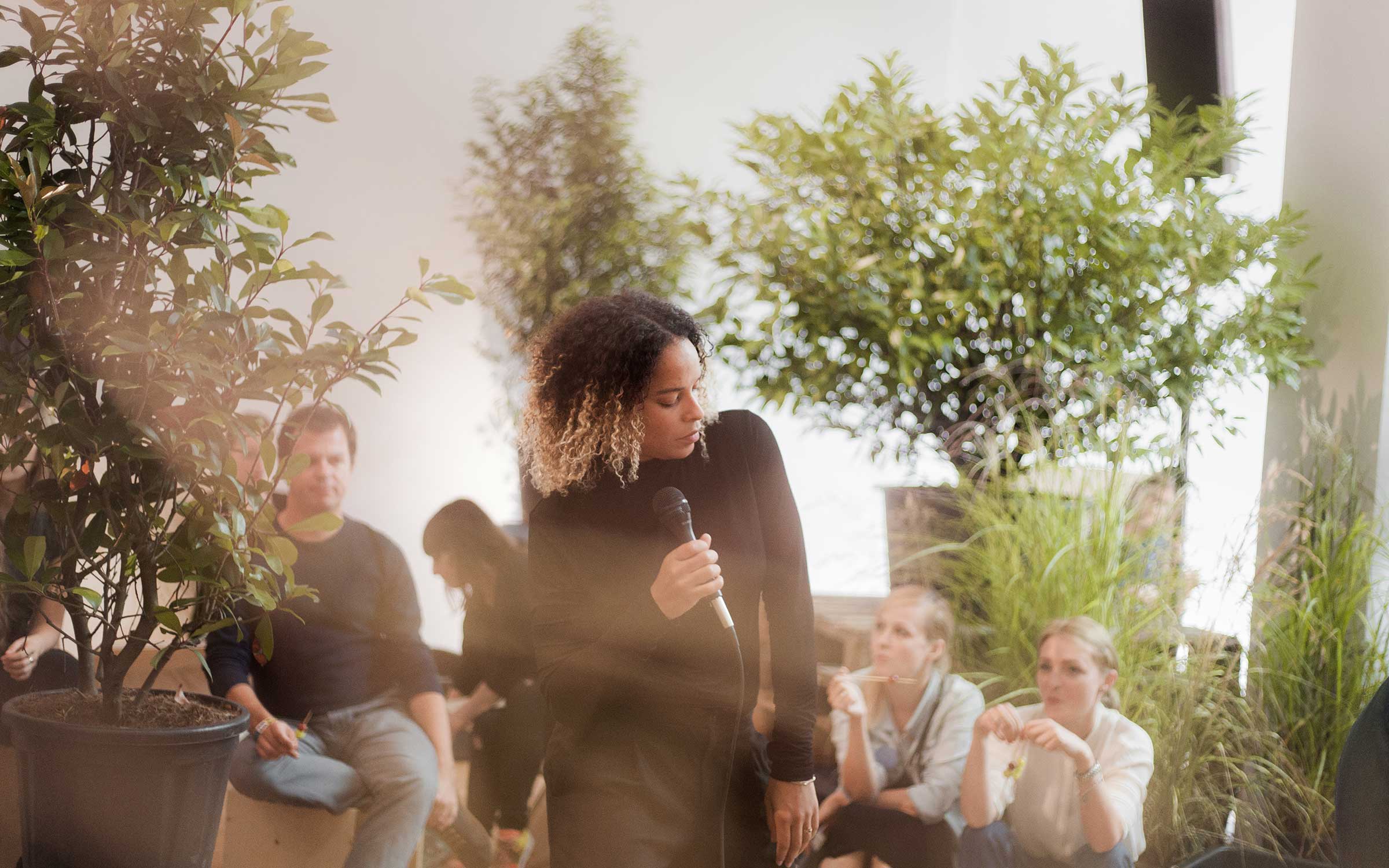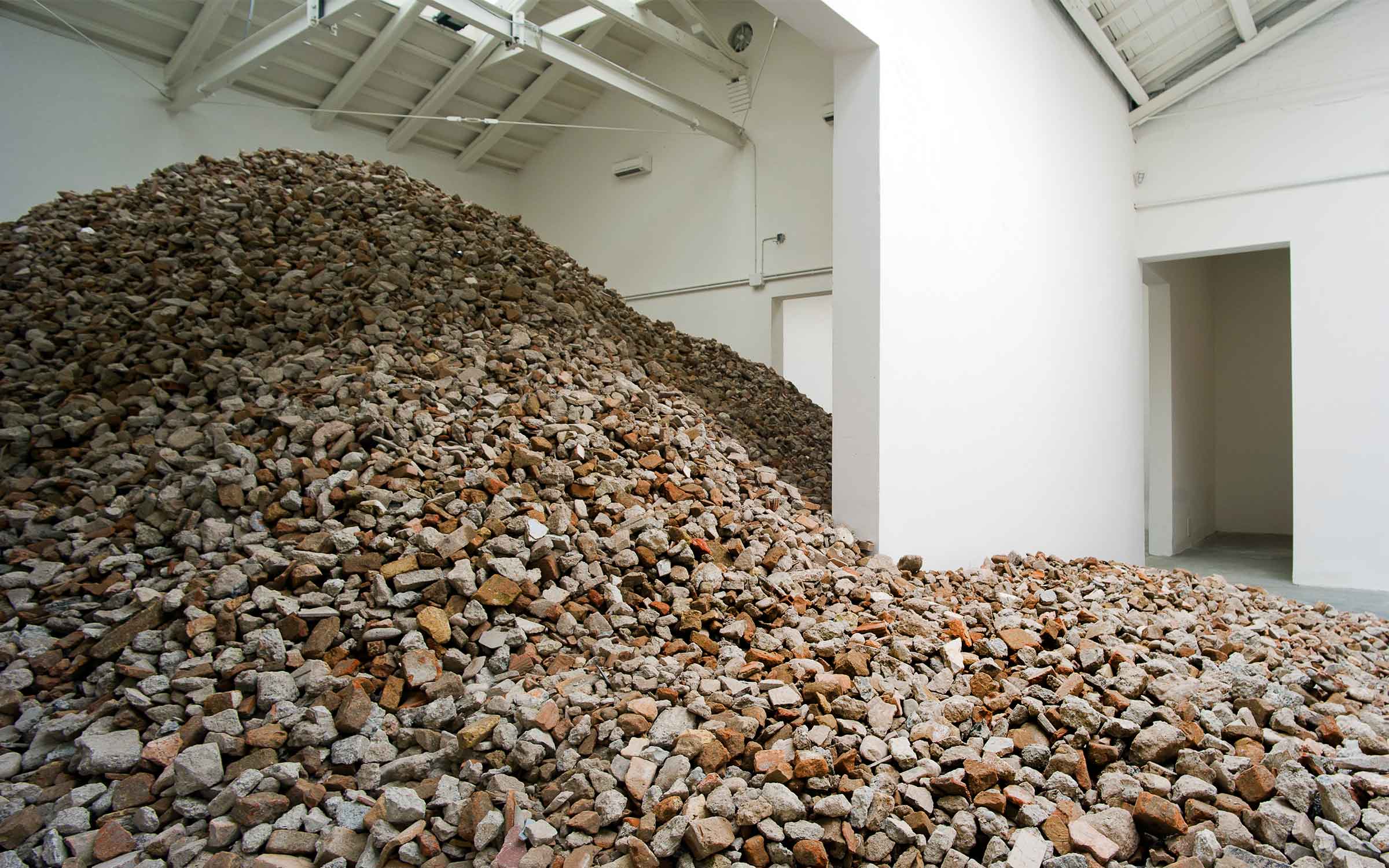Isabel Lewis, Lara Almarcegui and Recetas Urbanas perform the urban space on Basel’s Messeplatz
For this year’s Messeplatz project, Creative Time has curated a participatory installation that uses drumming workshops, mounds of rubble, and a temporary visitor-constructed building to question the meaning of public space
by Josie Thaddeus-Johns
In the weeks before Art Basel begins, there is always a lot of work going on behind the scenes. But in the run-up to this year’s fair, Basel residents are involved in constructing an immersive work, Basilea, that will take over the central Messeplatz square. ‘My main interest is in reaching as many communities as possible,’ says Elvira Dyangani Ose, senior curator at Creative Time, the New York-based public art initiative commissioned to create the work. The main installation will comprise interlocking immersive projects by artists Lara Almarcegui and Isabel Lewis, and the architecture collective Recetas Urbanas, led by Santiago Cirugeda. These three creators have come together to reflect on the city’s possibilities and the significance of sharing urban space. ‘Basilea is about how we can engage with what makes a place a city and how our use of and relationship to public space can be formulated differently,’ says Dyangani Ose.

This relationship to public space is formulated in the structure and imaginative, grassroots approach of the project, which will be built using recycled materials. The architecture collective Recetas Urbanas (‘Urban Recipes’) will utilize the help of local volunteers to hammer, drill, saw, and construct a multi-use civic structure. Locals and visitors can contribute ideas that will be directly incorporated into the work. Decisions about the structure, so often made in behind-closed-door meetings with very little input from the people who live nearby, will instead be a community affair, a mix of recycled materials brought together with enthusiasm and spirit rather than a strict adherence to technical integrity: similarly, a previous Recetas Urbanas project set a bright-red shipping container atop long, angular, industrial, spider legs.

For the public, by the public – this is the message of the works by Recetas Urbanas, whose participatory and subversive buildings featured at the 2016 Venice Architecture Biennale and the Goteborg International Biennial for Contemporary Art. The design and advocacy collective is known for working with a wide range of people, at all skill levels, to provide multi-use spaces that can be legally provocative – and Basilea is no different. The collective is not just interested in the processes of creating a building, but also in how the building functions as a practical and social construction for a community. To this end, once the structure is built, those who worked on it will be able to decide what to do with it, where should it be moved, and its purpose. This gives residents a chance to determine how they see Basel as an urban environment. ‘Reusing the installation will give citizens the right to think about and decide how to structure a fragment of their city,’ Cirugeda explains. Public space belongs to us all, but it’s often hard to elicit a feeling of real investment in that ownership. ‘Citizens have lost their capacity to react to spatial injustice,’ he says. Recetas Urbanas reacts against this by offering an opportunity for civil architecture, reminding us that the city belongs to the people who live in it.

While some people involved in this immersive, participatory extravaganza will be hammering away creating a physical edifice in the civic space, others will be making a different kind of noise through interactive workshops hosted by Berlin-based artist Isabel Lewis. Drumming, singing, and parkour will all feature in the master classes hosted by the performer, club-night host, and cultural critic, evoking an art fair or even squat-rave atmosphere. Participants might be thrown into a tai chi workshop; others might bring along their own drum to add to the chorus of instruments, led by percussionist Colin Hacklander, echoing around the square throughout the week. Lewis’s practice, in which she hosts parties, music sessions, and installations, often draws on people’s behavior in a group and how that creates a feeling of public space – what she calls ‘an environment constructed specifically to share experiences and bodily practices’. With Basilea, the Dominican-American artist is carving out a moment to make a public space that is both open and intimate, where Basel’s residents and visitors can be social and playful with one another: ‘I am interested in making structures available for expressions of care and sociability.’ It will certainly be fun, new and unexpected, whether you are watching locals, young and old, yodel their way through a breathing workshop or leaping in yourself, urban obstacle-jumping with your newly honed parkour skills.

Lara Almarcegui's contribution to Basilea is a large-scale installation of excavated stone that will sit alongside Recetas Urbanas’s mobile structure. Gravel is a time-based installation that will see Messeplatz dominated by piles of building material taken from a nearby active quarry. These piles will grow incrementally during the week of the fair, mirroring the average volume extracted from Basel's quarries. It’s an approach typical of her practice: at the 55th Venice Biennale in 2013, she filled the interior of the Spanish Pavilion with an amount of rubble that was equivalent to the amount of material used to create the building itself. Almarcegui is also creating an accompanying guide to the city’s empty gravel pits, of which there are now many in the surrounding area, encouraging her audience to ‘reflect on new uses of these abandoned terrains, and on the consequences of extraction’. The city coexists with nature, but this is often an uneasy relationship: what are the consequences of urban development, of human progress? Almarcegui’s work forces the viewer to consider how it is we got here – to Messeplatz, to the Herzog & de Meuron building that adjoins it, indeed to Art Basel itself.
This attitude towards the urban social environment is what unifies the Basilea project: investigating Basel’s potential as a space for dialogue about how we coexist – with other people, buildings, and nature, equally. ‘The project is formulated as a query about public space and its uses, not only in Basel but also elsewhere. What does “public” mean? What does it mean to be “in public”?’ asks Dyangani Ose. The truth is that in an age of fake news and filter bubbles, bringing audiences together through collective aesthetic experiences has a unique currency. Elvira Dyangani Ose believes this is crucially relevant to showing art today: ‘Providing experiences is becoming more and more important – taking the opportunity to be together in a context in which we engage with what it means to be human, what it means to be part of something larger than oneself.’
In this sense, there’s a necessary blurring of the lines between audience members and participants in Basilea, but each aspect, from gazing up at a growing pile of quarry rock to knocking another nail into a reclaimed plank of wood, reimagines the public space as something open and available, something that is up for grabs for all citizens.
Ultimately it will be up to those who become involved to decide what to make of the occasion. As Dyangani Ose puts it, rather cryptically: ‘The ways you can participate will be unveiled once you are there…’ Basel, we hope you are ready.
Josie Thaddeus-Johns is a writer based in Berlin.
Messeplatz performances will take place from Monday June 11 to Sunday June 17. For more details about the open call, click here
On Saturday, June 16 from 3pm to 4pm, Isabel Lewis, Enrique Fontanilles, Senam Okudzeto and Elvira Dyangani Ose will be discussing the role of citizens, communities and artists in activating public spaces as part of Art Basel's Conversations program and in relation to the Messeplatz project. Location: Auditorium, Hall 1.1

